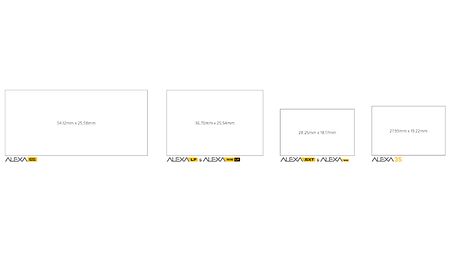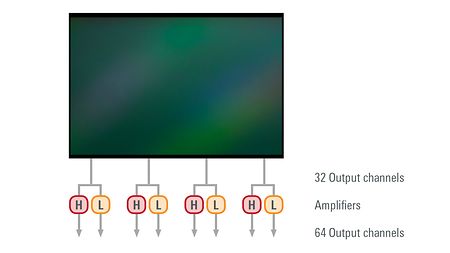A big evolutionary step for our ALEV 3 came in 2014/2015 and was housed within the ALEXA 65 camera. The “ALEV 3 A3X” is a sensor three times as big as the Super 35 ALEV 3, offering a photosite count of 6560x3100 with the same photosites known from the Super 35 sized sensor. This makes ALEXA 65 the digital camera with the largest digital motion picture sensor on the market. Its image size even surpasses 65 mm film.
Next in line was the ALEXA LF using the “ALEV 3 A2X” sensor. Introduced in 2018, this sensor offers a lower photosite count than ALEXA 65 but introduces “large format” (also known as 35 mm full frame in still photography) to the market. Covering an area of 36.70 mm x 25.54 mm, this format also introduced a new lens mount, the Large Positive Lock mount, or LPL.
In 2022, introduced with the ALEXA 35 camera, the ALEV 4 sensor upped the game: a new Super 35 4.6K sensor with significantly increased dynamic range and higher sensitivity.






